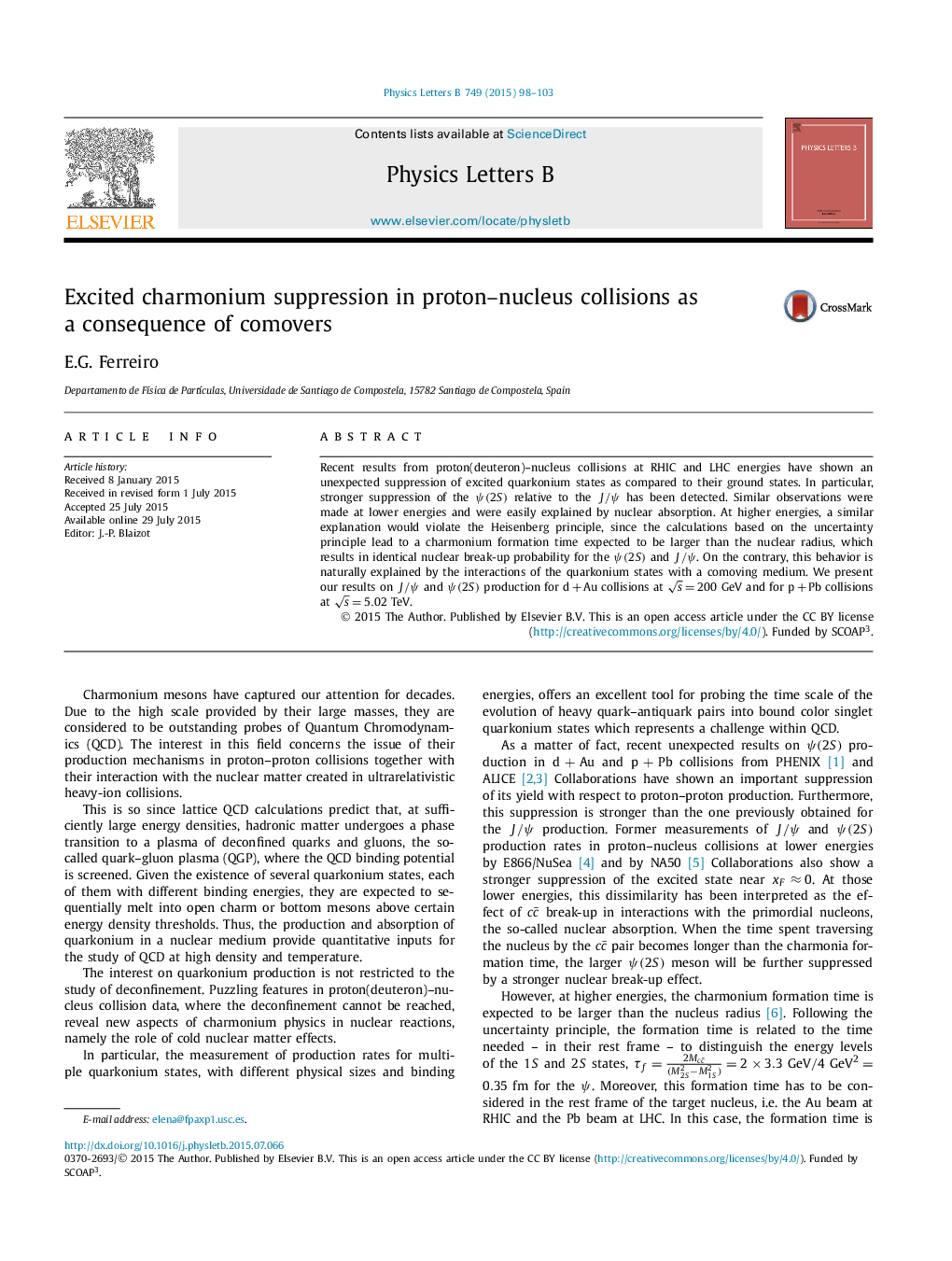| Article ID | Journal | Published Year | Pages | File Type |
|---|---|---|---|---|
| 1851552 | Physics Letters B | 2015 | 6 Pages |
Recent results from proton(deuteron)–nucleus collisions at RHIC and LHC energies have shown an unexpected suppression of excited quarkonium states as compared to their ground states. In particular, stronger suppression of the ψ(2S)ψ(2S) relative to the J/ψJ/ψ has been detected. Similar observations were made at lower energies and were easily explained by nuclear absorption. At higher energies, a similar explanation would violate the Heisenberg principle, since the calculations based on the uncertainty principle lead to a charmonium formation time expected to be larger than the nuclear radius, which results in identical nuclear break-up probability for the ψ(2S)ψ(2S) and J/ψJ/ψ. On the contrary, this behavior is naturally explained by the interactions of the quarkonium states with a comoving medium. We present our results on J/ψJ/ψ and ψ(2S)ψ(2S) production for d + Au collisions at s=200 GeV and for p + Pb collisions at s=5.02 TeV.
